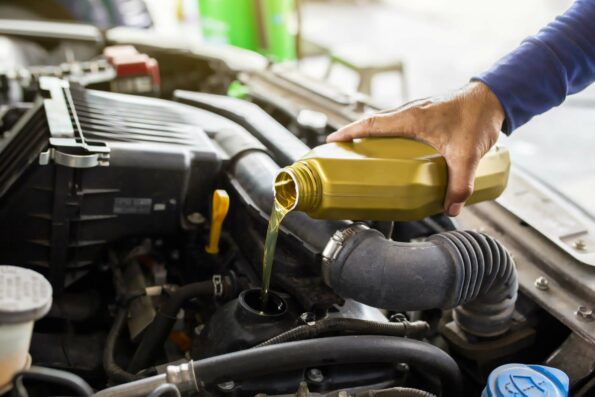When changing your engine oil, there are several things that you should look for to ensure that the process goes smoothly and that your engine is properly lubricated.
Check the existing oil
The existing oil is ready to be changed if it is no longer clear. The darker it is, the dirtier the oil. However, if the oil is milky, then you may have water entering the oil and you will need to get this checked by a mechanic.
Use the right type of oil
Make sure to use the type of oil specified in your owner’s manual or recommended by the manufacturer. Using the wrong type of oil can cause problems and may void your warranty. The oil’s viscosity is important. It is indicated by a number followed by the letter “W”. The number represents the oil’s resistance to flow at a specific temperature, with a higher number indicating a higher viscosity. For example, a motor oil with the viscosity rating of “10W-40” would have a viscosity of 10 at low temperatures and a viscosity of 40 at high temperatures.
Use the right tools
Make sure to use the proper tools and equipment when changing your engine oil. This includes a properly sized wrench or socket to remove the oil drain plug, as well as a drain pan to catch the old oil.
Be careful when removing the oil drain plug
The oil drain plug is typically located at the bottom of the engine, and it can be difficult to reach. Be careful when removing the plug to avoid stripping the threads or damaging the plug. Most oil drain plugs are 3/8″ or 1/2″ (around 10-12mm).
Allow the old oil to drain completely
After removing the oil drain plug, allow the old oil to drain completely into the drain pan. This can take several minutes, so be patient and wait until all of the old oil has drained out.
Old engine oil should be disposed of properly to avoid potential environmental pollution and harm to human health. The best way to dispose of old engine oil is to take it to a recycling centre or hazardous waste facility that is equipped to handle it. These facilities will typically accept oil for recycling or proper disposal at no or low cost.
You can also check with your local auto parts store or garage to see if they offer a program for recycling old engine oil. Some stores and garages may also accept old oil for recycling or proper disposal.
It is important to never pour old engine oil down the drain, on the ground, or into storm drains, as this can cause pollution and harm to the environment and to human health.
Replace the oil filter
After the old oil has drained out, remove the old oil filter and replace it with a new one. Be sure to use the correct type of oil filter and follow the manufacturer’s instructions for installation.
Add new oil
Once the oil filter has been replaced, add the new oil to the engine. Be sure to use the correct amount and type of oil, and check the oil level again to ensure that it is at the proper level.
Overall, changing your engine oil is an important part of maintaining your vehicle. By following these steps and using the right tools and products, you can help ensure that your engine is properly lubricated and running smoothly.

Check the oil level
Before you start the oil change, make sure to check the oil level to ensure that the engine is properly lubricated. If the oil level is low, you may need to add more oil before proceeding with the change.
If the oil level in your car is too high, it can cause a number of problems. First and foremost, excessive oil in the engine can cause the oil to foam or aerate, which can decrease its ability to lubricate the moving parts in the engine. This can lead to increased wear and tear on the engine, and can potentially cause damage or failure.
Excessive oil in the engine can also cause the crankshaft to become submerged in oil, which can lead to a loss of power and reduced fuel efficiency. Additionally, excess oil can leak from the engine or cause the oil level to rise too high in the crankcase, which can lead to oil blow-by and increased emissions.
